Payback is sweet for L.A. Opera
January 17, 2012
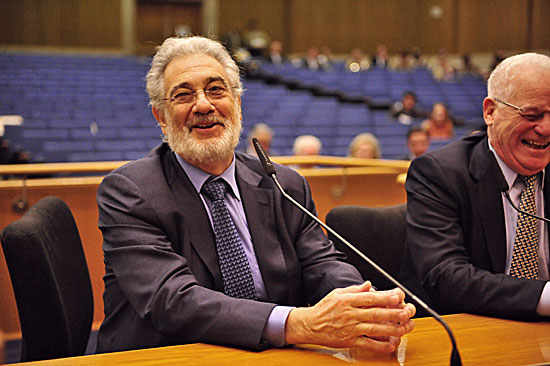
Team L.A. Opera, led by Placido Domingo, left, and Marc Stern is all smiles after early loan repayment.
When L.A. Opera was singing the blues, L.A. County chimed in with an urgently-needed high note, guaranteeing a bridge loan to help see the company through some deep financial woes.
On Tuesday, the opera company—led by its world-renowned maestro, Plácido Domingo—said thank you in a big way.
As in $7 million big.
Domingo announced to the Board of Supervisors that the opera company had repaid half of the $14 million bridge loan a full year early. The early payment, negotiated with lender Banc of America by the county’s Chief Executive Office, will save the opera $350,000 in interest.
“I am really very deeply touched by you having confidence in our company, trusting us,” Domingo, the opera’s general director, told the board. The loan, he said, came at a “most critical time in our young history, helping to stabilize the company during the first part of the economic downturn.”
Even on a day when reserve Sheriff’s Deputy Shervin Lalezary was being honored for his role in apprehending the New Year’s arson suspect, Domingo’s presence sent a thrill through the Board of Supervisors’ hearing room. Domingo posed for photographs with everyone from secretaries to chief deputies to Sheriff Lee Baca.
For one fleeting, only-in-L.A. moment, the longtime musical superstar (who will appear in Verdi’s Simon Boccanegra next month) greeted and shook hands with the suddenly famous reserve deputy hero (who appeared on “Ellen” this week) as both men awaited their turns before the board. (Both received proclamations from the supervisors but only Domingo received a serenade in honor of his upcoming birthday.)
Accompanying Domingo in his supervisors’ boardroom debut were L.A. Opera board chairman Marc Stern and CEO Stephen Rountree.
Supervisor and board chairman Zev Yaroslavsky praised the three leaders for successfully managing the company under “very difficult circumstances” and for paying back part of the bridge loan ahead of schedule.
“If we had not had confidence in you, we probably would have been fools to guarantee that loan,” Yaroslavsky said. “Keeping the opera going is a very important thing for us because you are one of our important tenants at the Music Center and we can’t afford to lose you…We’re glad we were able to help and we’re glad that you made us look good.”
“There were many skeptics who said we shouldn’t have made this loan,” added Supervisor Gloria Molina. “We’re so grateful that not only was it repaid, it was repaid early.”
The accelerated payment was made possible by donors making good on their pledges to the opera company. Rountree said the opera is on course to repay the remainder of the loan when it comes due in January, 2013.
The loan guaranteed by supervisors was a “very, very important bridge to our continued success,” Stern said after the meeting. “In retrospect,” he added, “it was a good bet.”
Posted 1/10/12
New library tells Topanga’s story, too
January 17, 2012
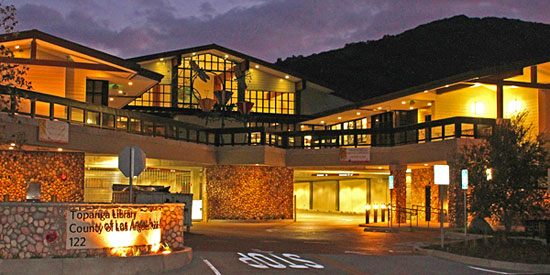
The new Topanga Library reflects the spirit and sensibilities of the artistic Santa Monica Mountains community.
It may not be easy to tell a book by its cover, but when the county’s newest library opens this weekend, visitors will have no trouble knowing which community’s stories are surrounding them.
From the design to the public artwork, the long-awaited Topanga Public Library, which will be dedicated on Saturday, is an organic outgrowth of the community it will soon serve.
“They tried to make it as homegrown as possible,” says Topanga artist Matt Doolin, who, with his brother Paul and his mother Leslie, created a circular tile mural of an idyllic Topanga landscape that will anchor the library’s main room.
The 11,293-square-foot, silver LEED-certified building broke ground in 2008 and has been in the works for more than a decade; for generations, residents of the mountain community had made do with other towns’ libraries and a visiting bookmobile. (Click here for a gallery of early construction work.)
Although Los Angeles County funded the $19.6 million project, it was clear from the start that the iconoclastic community, filled with environmentalists and artists, would insist on weighing in on the building’s aesthetic and carbon footprint.
“There are a lot of stakeholders in Topanga,” laughs Rebecca Catterall, former president of the Topanga Canyon Gallery and a 30-year-resident of the rustic enclave.
“There’s a sense of a spiritual connection there that’s not like any other place, and I think it’s important to the people,” agrees Norman Grochowski, who spent most of his career in Topanga and whose massive-yet-whimsical steel-and-ceramic book flowers bedeck the library’s entry.
“Topanga is a land within a land, a place far away.”
So a local design advisory committee was convened to determine the rustic “lodge” look of the North Topanga Boulevard building, and the library was built to the latest green construction standards.
Meanwhile, in accordance with county policy, one percent of the cost of construction was allocated for the incorporation of civic art into the project. A second local committee, this one pulled from the local art scene by the Los Angeles County Arts Commission, commissioned pieces by four local artists. (Click here for an extensive photo gallery of the of the library’s artwork on Green Public Art’s Flickr page.)
Catterall, who sat on the arts committee, says the group methodically culled 29 entries in search of artists who were both representative of the community and who worked on an architectural scale. Patricia Correia, a Topanga-based art dealer and former gallery owner who served with Catterall, says the artists were chosen first and then asked to make pieces for specific areas of the building.
“A lot of times in public art, people pick a beautiful sculpture and then find out it’s too small or too big.”
Some aspects of the new library ended up being literally rooted in Topanga: A podium, two Adirondackchairs, two rocking chairs and a picnic table were made from trees that had had to be removed during construction. That work, set in motion by Supervisor Zev Yaroslavsky’s office, was done by Don Seawater, whose California-based Pacific Coast Lumber Co. is a leader in the use of reclaimed wood and urban forestry.
Artist and art teacher Megan Rice, who did two papier mache sculptures for the library’s children’s section, also honored the fallen trees—two oaks and two pines—by using one of the stumps as the base for “A Great Tale,” which depicts a little boy reading to his faithful dog.
“I’ve lived in Topanga since 1956, and when I heard they were looking for artists with a vested interest in Topanga, I felt, ‘That’s me’,” says Rice, who was 5 when her parents moved to the community.
“My mother was the children’s librarian at Topanga Elementary School for eight or ten years, and I grew up with the bookmobile—in fact, in my early childhood, it was a very big part of my life because we had few neighbors, and for a long time my mother didn’t have a car, so getting a big stack of books there was a source of great excitement for me.”
Local potter Jim Sullivan, a resident since the early 1960s, remembered the Topanga childhood of his now-grown daughter when he designed the ceramic tile “rug” just inside the front entrance. “When she was in fourth grade, she went to the Adamson House inMalibu, and the docent stopped them at the front door and pointed to the threshold,” says Sullivan. “She said, ‘Does anybody know what that is?’”
Only Sullivan’s daughter, the child of a ceramist, knew that the design on the floor was a broken tile mosaic. When the guide explained that broken tile was often used in doorways because of ancient lore that it kept out evil spirits, Sullivan says his daughter became so excited that she begged him relentlessly to install similar mosaics in their own house.
Since then, he says, he has done a number of such installations, and when he heard about the library commissions, he felt a piece of broken-tile floor art would be perfect for Topanga’s new landmark. His 8-foot-wide piece, made entirely by hand, he says, depicts a spark growing into a flame of intellect and community.
All the artists who contributed work are established and well known in Topanga. The Doolins have done murals at local landmarks ranging from Disneyland California Adventure to public pools in South Los Angeles. Grochowski, who now lives in Crescent City, Ca., but visits Topanga several times a year, has shown work at LACMA and the Laguna Art Museum.
Rice’s work has been exhibited throughout California, and Sullivan, whose ceramics are in a number of private collections, has done historic restoration work from Malibu to Pasadena; for many years he co-owned Malibu Ceramic Works, a Topanga tile company that replicated historic tiles.
Correia says the work by Sullivan and the Doolins echoes Topanga’s long history as a center for ceramic artwork and the sculptures by Rice and Grochowski brought variety.
“There aren’t a lot of libraries getting built anymore,” she notes. “It was exciting, and we wanted to bring a three-dimensionality to the space, take it beyond just a big painting or a big mural outside.”
The new library “is incredibly important,” adds Correia.
“We don’t really have an everyday kind of communal place that isn’t a commercial space,” she says. “This is going to bring the community together in a way that deals with knowledge and culture and imagination. I can’t wait.”
The library’s grand opening will take place Saturday, January 21, at 11 a.m. The address is 122 N. Topanga Canyon Blvd.
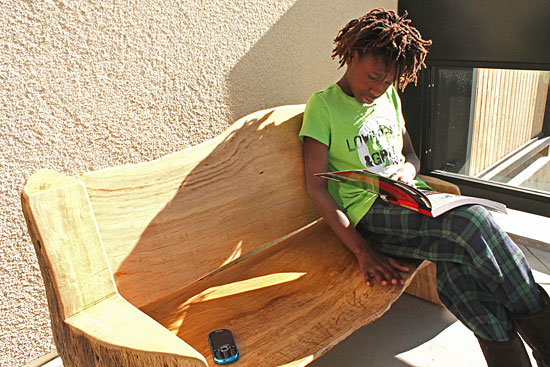
Some of the library's furniture, such as this bench, was crafted from trees that were cleared for the facility.
Posted 1/17/12
Bike plan heads toward finish line
January 12, 2012
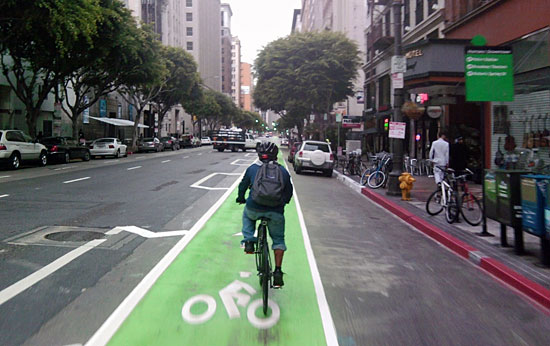
Painted bike lanes, like this one downtown, could be coming to county streets. Eco-Village blog photo
A revised bicycle master plan, infused with some new and creative elements, is on its way to the Board of Supervisors following approval Wednesday by the county’s Regional Planning commission.
The bike plan represents the county’s first such effort since 1975. Prompted by supervisors and members of the cycling community, who urged planners to move into the vanguard of bike innovation, the current version of the plan includes a number of up-to-the-minute design elements that could be placed on streets in unincorporated parts of the county. Those include colored bicycle lanes, “cycle tracks” and buffered lanes in which bikes are separated from automobile traffic, and “bicycle boxes” that designate a place for cyclists to move ahead of cars at some intersections.
“While these treatments do not have approved design standards at this time, the County will incorporate them into the Plan’s toolbox of treatments as their uniform designs and standards are approved by the State of California Department of Transportation,” according to an executive summary of the plan approved Wednesday. “The County promotes the use of these innovative treatments and will apply for and implement experimental projects utilizing them where cost effective and where such projects enhance the safety of bicycles, pedestrians, and motorists.”
The latest version of the plan also increases the size of the network of new bikeways proposed for unincorporated part of Los Angeles County over the next two decades, from 816 miles to 832 miles. Creating the network will cost an estimated $331 million. The plan calls for nearly 72 miles of dedicated bike routes and nearly 274 miles of bike lanes, as well as 22.8 miles of slower moving, cycling-friendly “bicycle boulevards” on local or residential streets. However, most of the network would be devoted to some 463 miles’ worth of “Class III” bike routes, with signage but no dedicated space for cyclists.
The Board of Supervisors is expected to invite more public comment before it takes action on the bicycle plan in coming weeks.
“Generally speaking, we feel there’s been quite a bit of improvement,” said Alexis Lantz, planning and policy director for the Los Angeles County Bicycle Coalition. She said her group will continue to advocate for the plan to function as a “living document” that will contribute to more and better cycling in the county over the next 20 years. That means streamlining the process for engineers in the future to upgrade bike facilities when the opportunity arises to do so, she said.
Posted 1/11/12
Give bike-sharing a test drive
January 12, 2012
They share bikes in Paris and Portland, so why not here?
Metro’s inviting the public to a bike share demonstration on Wednesday, January 18.
The agency currently is looking into whether to adopt a bike share program offering short-term bicycle rentals through an automated system, such as a computerized kiosk. (See the motion by Metro board members Zev Yaroslavsky, Pam O’Connor and Antonio Villaraigosa here.)
Three vendors will roll out their bikes for the demonstration at Metro headquarters downtown. The event runs from 10 a.m. till 2 p.m. For more information, click here.
Posted 1/12/11
Changes coming for Orange Line riders
January 11, 2012
Metro’s Orange Line Extension is well on its way to improving transit options in the western San Fernando Valley and beyond. As construction continues, however, some current riders on the rapid transit busway will have their stops temporarily relocated in the days ahead.
From January 18 to January 30, the Pierce College, De Soto and Canoga Stations will move one block south, along Victory Boulevard. Ticket sales and parking will still be available at the original stations, but patrons should allow extra time to walk to the temporary stops, where tickets will not be sold.
The Orange Line Extension is currently ahead of schedule and under budget. It is expected to open two months early in June with a final price tag of about $180 million, substantially less than the $215.6 million budgeted for the project.
Once the four-mile extension is completed, it will stretch from Canoga Park to the Chatsworth Metrolink Station, improving north-south mobility in the San Fernando Valley and linking with Amtrak and other regional transit providers.
Posted 1/11/12
Calling all stewards of the sea
January 11, 2012
Protectors of Southern California surf just got a lot of new turf to keep an eye on. And they need your help.
On January 1, the California Fish and Game Commission gave marine ecosystems a regulatory facelift, creating 36 new Marine Protected Areas spanning 187 square miles of water. Several of the new areas, known as MPAs, are around Point Dume in Malibu. The designation places limits and sometimes prohibitions on fishing, and aims to create safe havens where sea life can thrive and multiply.
The environmental nonprofit group Heal the Bay was instrumental in helping to get the new designation. Now the organization is training “MPA Stewards” through a program called MPA Watch. Staff scientist Dana Murray, who manages the program, says you don’t need to be an expert to lend a hand.
“We had many supporters and people who worked hard to get the MPA approved in L.A. County,” she said. “We thought this was a good way for people to stay involved.”
Pairs of volunteers with binoculars, clipboards and cameras already have started canvassing the beaches, recording data on what they see people doing, from scuba diving to commercial squid fishing.
Murray said the data will be used to help promote legal recreational activities and to lend context to the marine biological data scientists are gathering. (Without monitoring the humans, Murray said, “you are skipping a species that affects all the rest.”) Perhaps most important, the data will be reported to the Fish and Game Commission in hopes of helping the agency stretch its limited enforcement resources.
However, Murray made it clear that MPA Watch is about collecting scientific data and not policing or reporting illegal acts.
“This is one way for us to aid the state without actually being the enforcement,” she said.
Those who care about marine life and enjoy long walks on the beach can become official stewards by attending two upcoming classes. The first class is scheduled for Wednesday, January 18, from 6 p.m. to 8 p.m. at Heal the Bay’s Santa Monica Pier Aquarium. The second class takes place “in the field” at Point Dume on Saturday, January 21, from 9:30 a.m. to 11:30 a.m.
To register, you must be at least 15 years old and RSVP by Tuesday, January 17 (not January 13, as is posted on the website). No experience is required, but volunteers should be able to spend 1 to 2 hours outdoors doing some moderate hiking. A minimum 6 month commitment of 4 surveys per month is required, but survey times are flexible. Students can get involved as a way of fulfilling community service requirements at school.
Training sessions first began last March, and if you miss this month’s training classes, more are expected to be scheduled in the future.
The new designations grow out of the Marine Life Protection Act of 1999, which directed the state Fish and Game Commission to redesign California’s system of MPAs after finding it inefficient, having been established piecemeal instead of by scientific plan. In December, 2010, after receiving input from experts, the public and local government, the Fish and Game Commission created a new map of MPAs in Southern California. Click here to take a look.
Posted 1/11/12
Reliving a chapter in L.A. history
January 10, 2012
Before there were skyscrapers, freeways and blockbuster movies—even before there was a Gold Rush—a place called Campo de Cahuenga entered the history books as a pivotal place in California history.
It was there in 1847 that the Articles of Capitulation were signed. That ceremony ended the Mexican-American War in California and led to the Treaty of Guadalupe Hidalgo, by which Mexico ceded all of California and a huge portion of what is now the western United States.
On Sunday, January 15, the Campo de Cahuenga Historical Memorial Association will reenact the historic signing by General Andres Pico and Lieutenant Colonel John C. Fremont, regional leaders of the Mexican and U.S. forces, respectively. Re-enactors will be dressed in authentic uniforms and a replica 1847 howitzer will be fired to mark the occasion.
For entertainment, there will be dance performances, access to the site’s archeological dig, refreshments and a $2 taco bar. Flags of the 12 nations that once laid claim to a part of California will be flown.
The event, the 62nd such re-enactment, takes place Sunday from 1 p.m. to 2:30 p.m. after a presentation of a memorial wreath at 12:30 p.m. Campo de Cahuenga is an outdoor historical site and museum located at 3919 Lankershim Boulevard in North Hollywood.
Posted 1/10/12
A boatload of homeland security
January 10, 2012
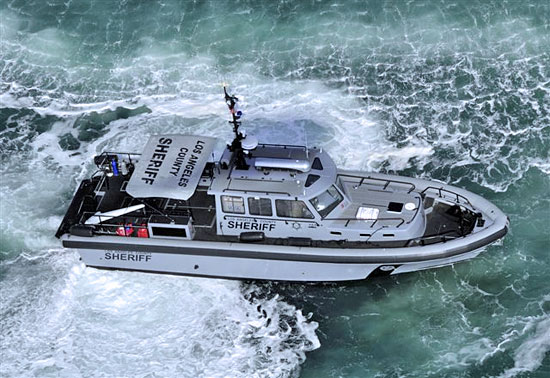
Sheriff's officials are hoping to soon have a second terrorist-fighting boat patroling the waters off L.A. County.
Its crews have secured evidence from offshore pot busts. Its advanced sonar helped locate wreckage from a mid-air plane crash off the coast three years ago.
But mostly the Ocean Rescue II spends its days scanning for a threat that its crew hopes will never appear on any law enforcement blotter: the possibility that weapons of mass destruction might be smuggled into the massive Port of Los Angeles.
“This boat essentially provides homeland security for the entire L.A.County coast,” says Los Angeles County Sheriff’s Lt. Jack Ewell, who has worked on the 55-foot-long, super-high-tech vessel since its deployment in the port three years ago.
Paid for with a $2.25 million federal grant from the Department of Homeland Security and operated by a rotating 3-man crew from the sheriff’s special enforcement bureau, the Ocean Rescue II can scan ship hulls for traces of biological, radiological, chemical and nuclear weapons and can transmit the data to onshore labs in real time. Its sonar sees threats in the murkiest waters; its remote underwater vehicle can pluck bombs from ship bottoms and retrieve evidence 3,000 feet underwater.
“It’s pretty unique,” says David Gutierrez, vice-president of manufacturing at Willard Marine in Anaheim, which custom-built the vessel for the Sheriff’s Department. “It looks like just a standard boat with a lot of bells and whistles, but it’s a very important piece of equipment at the port.”
But the combination of all that technology and salt air is an ongoing issue: “You have to keep it painted, maintain the engines—to keep a boat like that working 7 days a week requires a lot of maintenance,” Ewell says.
“It’s like a patrol car,” agrees Gutierrez. “It has to always be ready to go.”
This, Ewell says, is why the sheriff hopes to bring in a backup with the help of a $3 million federal grant won by the department last year.
“A second boat will give us the capability to rotate vessels, or to have two boats in the water at the same time,” Ewell says.
It also will add to the sheriff’s already impressive counter-terrorism arsenal, which includes a radiation-detecting helicopter and a biological- and chemical-weapon-sniffing Labrador named Johnny Ringo.
At least eight of the 34 boats in the sheriff’s department fleet are assigned to the Special Enforcement Bureau, which includes the Homeland Security Division where Ewell works. Another dozen—including an offshore vessel with nuclear detection capabilities—patrol out of Marina del Rey or Catalina Island.
Backing them up, of course, are maritime forces from the U.S. Coast Guard as well as port-stationed boats manned by the Long Beach police, the Port of Los Angeles police and other law enforcement agencies.
The stakes are high, Ewell explains.
“It’s been estimated that an incident that shut down the port here would cost theU.S.economy $2 billion a day,” he says. “Forty percent of the nation’s imports come through here, and our coastal region is heavily populated. It would devastate the region if anything were to affect the port.”
So far, Ewell says, the boat’s daily scanning hasn’t uncovered any dirty bombs. (“Believe me, you’d know it if they did.”)
But it has been put to other uses. In April 2010, for instance, the sheriff’s department used it to help secure a large cache of marijuana from an isolated cove on Catalina Island where a smuggler’s boat had been stranded.
And in 2009, when two private planes collided in mid-air off the coast of Long Beach, Ewell says, “the boat was used for two weeks straight to recover parts of the planes, and to find the victims and return the remains to their families.”
The second boat, if authorized next week by the Board of Supervisors, would similarly do double duty, Ewell says. Like Ocean Rescue II, it is expected to be equipped with advanced life support equipment, and to be set up for large-scale diver operations.
“We’ll use it on medical emergencies, criminal investigations, plane crashes,” he says. “The way budgets are these days, you have to get a lot of bang from the buck.”
Posted 1/10/12
Eight ways to a happier 2012
January 10, 2012
What’s your New Year’s resolution?
Chances are, it’s aimed at a happier 2012. But what works when it comes to improving your day-to-day satisfaction? Can one resolution actually make any difference?
Sure, says Dr. William Arroyo, the Department of Mental Health’s regional medical director. But it may not be the sort of resolution most people are used to making. Here are his tips for a more soul-satisfying year:
1. Resolve to do a self-inventory. “Take note of all the good things, large and small, that were achieved in the prior year,” Dr. Arroyo says. Write them down—you might be pleasantly surprised at all you’ve accomplished. Now take special note of anything that was not only good for you, but also good for your family, workplace or community, and consider doing them again this year.
2. Resolve to give yourself permission to change. This is harder for some people than it sounds, Dr. Arroyo says. Behaviors become entrenched. Friends and families become invested in old habits. “It isn’t always easy to remember that it’s in our nature to pursue good,” he says. “It’s okay to do something differently, especially when doing it the same old way hasn’t worked or has offended those close to you.”
3. Resolve to build pleasure into even into the smallest of budgets. “Maybe you want to manage your money more efficiently,” says Dr. Arroyo, “or allocate for all your bills. That’s fine, but if there’s anything leftover, don’t forget to allocate some resources for pleasure—and pleasure doesn’t have to be expensive. Sometimes pleasure can be just spending time with friends and family, or with those one didn’t have time for in the prior year.”
4. Resolve to be healthy. “And that includes mental health,” the doctor says. “Pay attention to diet and exercise. Avoid harmful substances, whether it’s fatty food, or alcohol or some other potentially harmful thing. But also monitor moods and feelings. If one’s social life is unsatisfactory, think about bringing parts of that to a close. If people around you appear to jeopardize your well-being, think about changing your social circle. Whether it’s foods and beverages or people, give yourself permission to get away from toxic environments.”
5. Resolve to seek peace. “Yoga, prayer, meditation—these work wonders for many people,” says Arroyo. So, he adds, does professional counseling. “Everyone experiences worry and anxiety, but if that’s your primary mood, then it’s probably excessive and you might want to consult with a spouse, a partner, a trusted relative or member of your congregation, or you may want to seek professional help. A little bit of anxiety is normal and useful, but not to the degree where it interferes with your well-being.”
6. Resolve to communicate. “Becoming closer often entails making an inquiry,” says the doctor. If you’d like to be closer to your loved ones, “ask how you can be better with them this year. Be humble. Give the other person permission to let you know when you do something that causes them displeasure—and be willing to change it.” Or, if you aren’t getting what you need from your relationships, resolve to say so: “It’s okay to set limits with others, no matter how close or how distant they might be.”
7. Resolve not to overlook the positive. “One needs to be objective in tough times,” says Dr. Arroyo, “and to keep in mind that there is always more than one way of looking at things. Even in our darkest, most painful moments, there is often a bright side.” Hard times pass, he says, but those who weather them can come away with valuable life experience.
8. Resolve to reach out. “As folks are winding up the year, there’s always a lot of hustle and bustle, and we forget that some people are not as fortunate as we are,” Dr. Arroyo says. “Those who don’t have our means or our health or our rich circle of family and friends could benefit from some demonstration of interest in their well-being—spending time with them, conveying that we care.” Donating to charity isn’t the only route, either. “You can volunteer in an organization,” he says, “or work within your neighborhood.” The key, he says, is to connect and be useful: “It reminds that one is more than the things and money one has.”
Posted 12/30/11




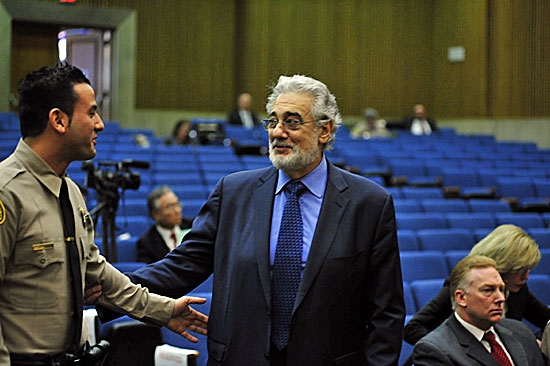

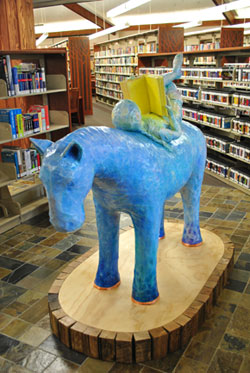
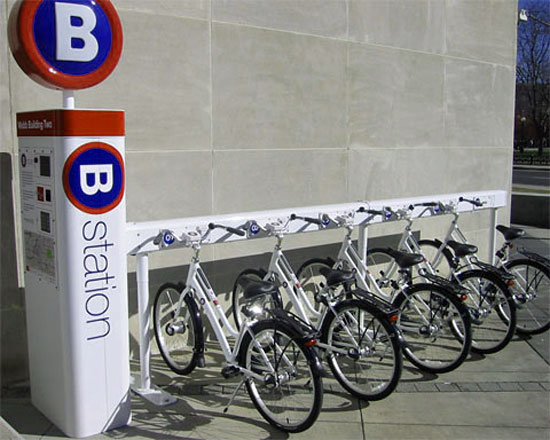

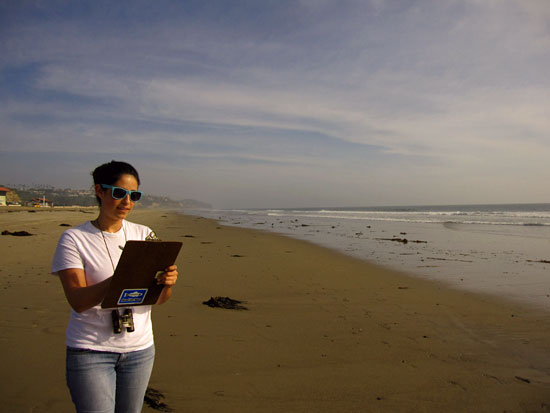








 Check for the latest closure information
Check for the latest closure information








